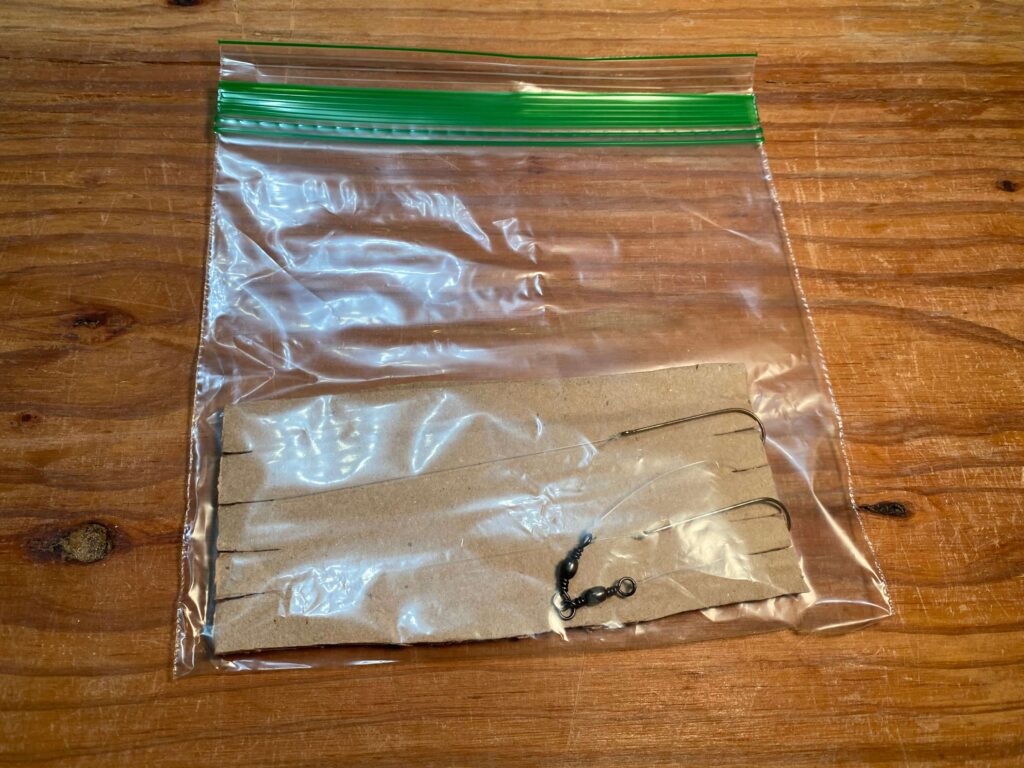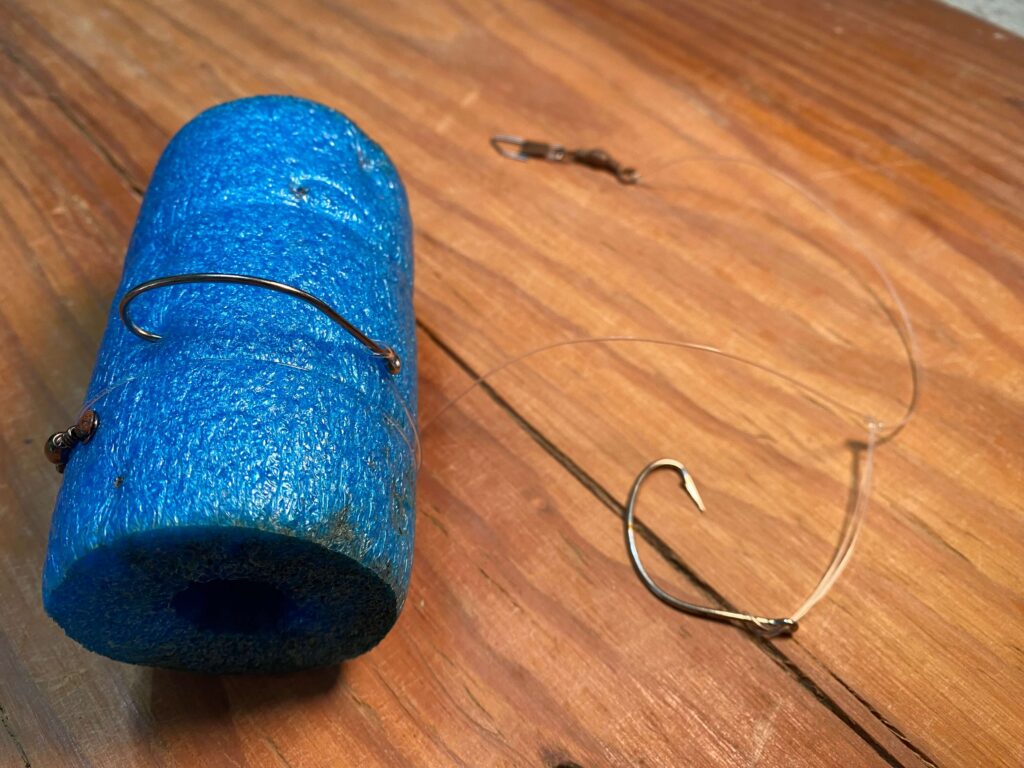There are several different types of “rigs” used for shore fishing, including the various types of bottom rigs. Storing these rigs can be a real pain. The challenge is that we want to have our rigs “ready to go” at all times, and but we want to avoid a tangled mess when pulling them out of our tackle box/bag. This article discusses a couple of excellent options for storing your rigs, hooks and all, while avoiding tangles. I have tried many methods over the years and so far the methods discussed here have been the most trouble-free for me.
The “Scrap Cardboard” Method
Simple rigs, such as those with just one hook, can be stored using this method. The picture below illustrates this method best. You basically just need a rectangular piece of scrap corrugated cardboard. Cut slots in each end about 1/4″ apart, then secure the line in the slots (red arrow). The hooks points can fit into the slots or into the rough corrugated edge (blue arrow).

For added security, place the cardboard with the rigs into a resealable sandwich bag.

This storage method is super convenient, and these rigs can be pulled right off of the cardboard to make a freeline rig, fishfinder rig, bobber rig, or any other rig that you desire.
The “Pool Noodle” Method
A small section of pool noodle is excellent for storing more complicated rigs, including those that have multiple hooks or drops. For example, here is how I attach a two-hook bottom rig to the noodle. First, pin the swivel (or loop) to the noodle with a small nail (red arrow):

Next, wrap the line around the noodle until you get to the first hook. Stick the first hook into the noodle…

Continue wrapping until you get to the second hook, then stick the second hook into the noodle…

Finally, use a second nail to secure the snap, or simply open the snap and hook it onto the wrapped mono (orange arrow).

The noodle also works great for Sabiki rigs (red arrow) and speck rigs (blue arrow):

Similar to the cardboard method, I recommend placing the noodle in a resealable bag for added security.
Hopefully these methods will help you store rigs more efficiently with less mess.
Have a reel good day,
– The Simple Fisherman
